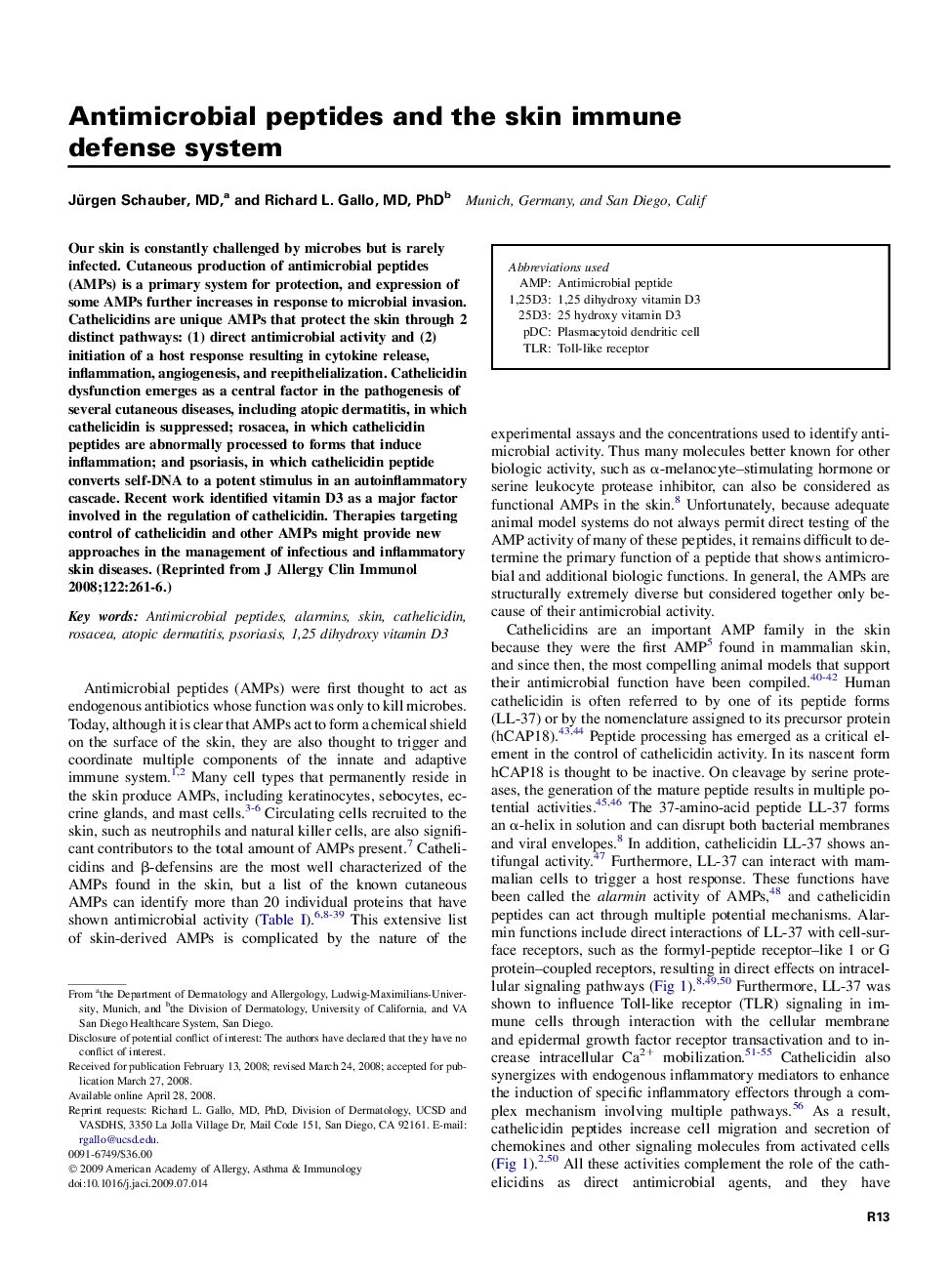| Article ID | Journal | Published Year | Pages | File Type |
|---|---|---|---|---|
| 3201236 | Journal of Allergy and Clinical Immunology | 2009 | 6 Pages |
Our skin is constantly challenged by microbes but is rarely infected. Cutaneous production of antimicrobial peptides (AMPs) is a primary system for protection, and expression of some AMPs further increases in response to microbial invasion. Cathelicidins are unique AMPs that protect the skin through 2 distinct pathways: (1) direct antimicrobial activity and (2) initiation of a host response resulting in cytokine release, inflammation, angiogenesis, and reepithelialization. Cathelicidin dysfunction emerges as a central factor in the pathogenesis of several cutaneous diseases, including atopic dermatitis, in which cathelicidin is suppressed; rosacea, in which cathelicidin peptides are abnormally processed to forms that induce inflammation; and psoriasis, in which cathelicidin peptide converts self-DNA to a potent stimulus in an autoinflammatory cascade. Recent work identified vitamin D3 as a major factor involved in the regulation of cathelicidin. Therapies targeting control of cathelicidin and other AMPs might provide new approaches in the management of infectious and inflammatory skin diseases.
